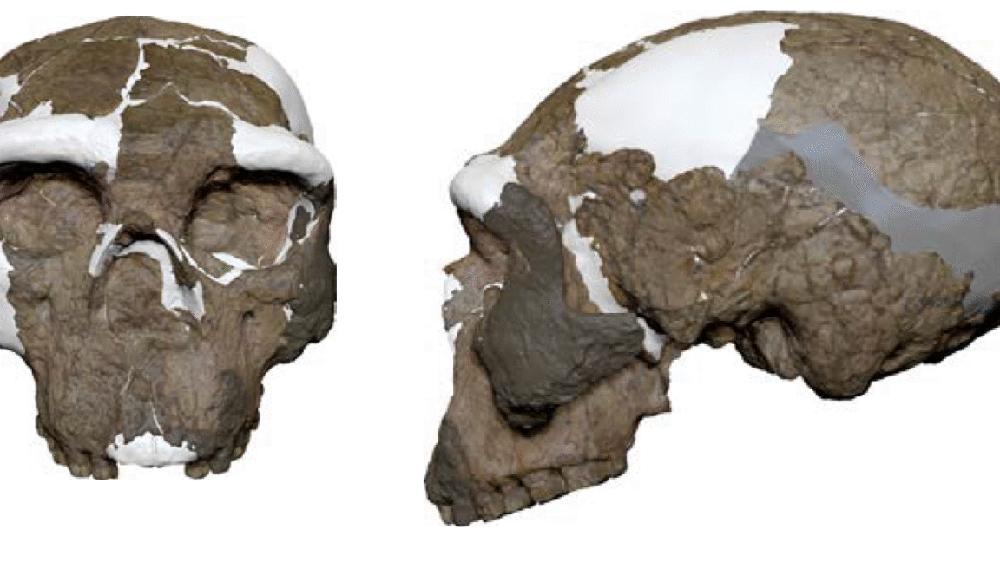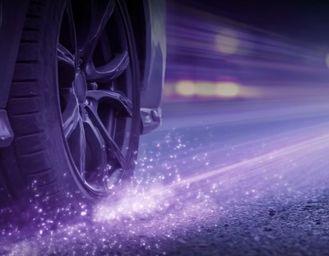A fossil skull from China that made headlines last week may or may not be a million years old, but it's probably closely related to Denisovans.
The fossil skull, dubbed Yunxian 2, is one of three unearthed from a terrace alongside the Han River, in central China, in a layer of river sediment somewhere between 600,000 and 1 million years old. Archaeologists originally identified them as Homo erectus, but Hanjiang Normal University paleoanthropologist Xiaobo Feng and his colleagues’ recent digital reconstruction of Yunxian 2 suggests the skulls may actually have belonged to someone a lot more similar to us: a hominin group defined as a species called Homo longi or a Denisovan, depending on who’s doing the naming.
The recent paper adds fuel—and a new twist—to that debate. And the whole thing may hinge on a third skull from the same site, still waiting to be published.
Denisovan or Homo longi?
The Yunxian skull was cracked and broken after hundreds of thousands of years under the crushing weight of all that river mud, but the authors used CT scans to digitally put the pieces back together. (They got some clues from a few intact bits of Yunxian 1, which lay buried in the same layer of mud just 3 meters away.) In the end, Feng and his colleagues found themselves looking at a familiar face; Yunxian 2 bears a striking resemblance to a 146,000-year-old Denisovan skull.
That skull, from Harbin in northeast China, made headlines in 2021 when a team of paleoanthropologists claimed it was part of an entirely new species, which they dubbed Homo longi. According to that first study, Homo longi was a distinct hominin species, separate from us, Neanderthals, and even Denisovans. That immediately became a point of contention because of features the skull shared with some other suspected Denisovan fossils.
Earlier this year, a team of researchers, which included one of the 2021 study’s authors, took samples of ancient proteins preserved in the Harbin skull; of the 95 proteins they found, three of them matched proteins only encoded in Denisovan DNA. While the June 2025 study suggested that Homo longi was a Denisovan all along, the new paper draws a different conclusion: Homo longi is a species that happens to include the population we’ve been calling Denisovans. As study coauthor Xijun Ni, of the Chinese Academy of Sciences, puts it in an email to Ars Technica, “Given their similar age range, distribution areas, and available morphological data, it is likely that Denisovans belong to the Homo longi species. However, little is known about Denisovan morphology.”
Of course, that statement—that we know little about Denisovan morphology (the shapes and features of their bones)—only applies if you don’t accept the results of the June 2025 study mentioned above, which clocked the Harbin skull as a Denisovan and therefore told us what one looks like.
And Feng and his colleagues, in fact, don’t accept those results. Instead, they consider Harbin part of some other group of Homo longi, and they question the earlier study’s methods and results. “The peptide sequences from Harbin, Penghu, and other fossils are too short and provide conflicting information,” Ni tells Ars Technica. Feng and his colleagues also question the results of another study, which used mitochondrial DNA to identify Harbin as a Denisovan.
In other words, Feng and his colleagues are pretty invested in defining Homo longi as a species and Denisovans as just one sub-group of that species. But that's hard to square with DNA data.
Alas, poor Yunxian 2, I knew him well
Yunxian 2 has a wide face with high, flat cheekbones, a wide nasal opening, and heavy brows. Its cranium is higher and rounder than Homo erectus (and the original reconstruction, done in the 1990s), but it’s still longer and lower than is normal for our species. Overall, it could have held about 1,143 cubic centimeters of brain, which is in the ballpark of modern people. But its shape may have left less room for the frontal lobe (the area where a lot of social skills, logic, motor skills, and executive function happen) than you’d expect in a Neanderthal or a Homo sapiens skull.
Feng and his colleagues measured the distances between 533 specific points on the skull: anatomical landmarks like muscle attachment points or the joints between certain bones. They compared those measurements to ones from 26 fossil hominin skulls and several dozen modern human skulls, using a computer program to calculate how similar each skull was to all of the others.
Yunxian 2 fits neatly into a lookalike group with the Harbin skull, along with two other skulls that paleoanthropologists have flagged as belonging to either Denisovans or Homo longi. Those two skulls are a 200,000- to 260,000-year-old skull found in Dali County in northwestern China and a 260,000-year-old skull from Jinniushi (sometimes spelled Jinniushan) Cave in China.
Those morphological differences suggest some things about how the individuals who once inhabited these skulls might have been related to each other, but that’s also where things get dicey.
Digging into the details
Most of what we know about how we’re related to our closest extinct hominin relatives (Neanderthals and Denisovans) comes from comparing our DNA to theirs and tracking how small changes in the genetic code build up over time. Based on DNA, our species last shared a common ancestor with Neanderthals and Denisovans sometime around 750,000 years ago in Africa. One branch of the family tree led to us; the other branch split again around 600,000 years ago, leading to Neanderthals and Denisovans (or Homo longi, if you prefer).
In other words, DNA tells us that Neanderthals and Denisovans are more closely related to each other than either is to us. (Unless you’re looking at mitochondrial DNA, which suggests that we’re more closely related to Neanderthals than to Denisovans; it’s complicated, and there’s a lot we still don’t understand.)
“Ancient mtDNA and genomic data show different phylogenetic relationships among Denisovans, Neanderthals and Homo sapiens,” says Ni. So depending on which set of data you use and where your hominin tree starts, it can be possible to get different answers about who is most closely related to whom. The fact that all of these groups interbred with each other can explain this complexity, but makes building family trees challenging.
It is very clear, however, that Feng and his colleagues' picture of the relationships between us and our late hominin cousins, based on similarities among fossil skulls in their study, looks very different from what the genomes tell us. In their model, we’re more closely related to Denisovans, and the Neanderthals are off on their own branch of the family tree. Feng and his colleagues also say those splits happened much earlier, with Neanderthals branching off on their own around 1.38 million years ago; we last shared a common ancestor with Homo longi around 1 million years ago.
That’s a big difference from DNA results, especially when it comes to timing. And the timing is likely to be the biggest controversy here. In a recent commentary on Feng and his colleagues’ study, University of Wisconsin paleoanthropologist John Hawks argues that you can’t just leave genetic evidence out of the picture.
“What this research should have done is to put the anatomical comparisons into context with the previous results from DNA, especially the genomes that enable us to understand the relationships of Denisovan, Neanderthal, and modern human groups,” Hawks writes.
(It's worth a side note that most news stories describe Yunxian 2 as being a million years old, and so do Feng and his colleagues. But electron spin resonance dating of fossil animal bones from the same sediment layer suggests the skull could be as young as 600,000 years old or as old as 1.1 million. That still needs to be narrowed down to everyone's satisfaction.)
What’s in a name?
Of course, DNA also tells us that even after all this branching and migrating, the three species were still similar enough to reproduce, which they did several times. Many groups of modern people still carry traces of Neanderthal and Denisovan DNA in their genomes, courtesy of those exchanges. And some ancient Neanderthal populations were carrying around even older chunks of human DNA in the same way. That arguably makes species definitions a little fuzzy at best—and maybe even irrelevant.
“I think all these groups, including Neanderthals, should be recognized within our own species, Homo sapiens,” writes Hawks. Hawks contends that the differences among these hominin groups “were the kind that evolve among the populations of a single species over time, not starkly different groups that tread the landscape in mutually unrecognizeable ways.”
But humans love to classify things (a trait we may have shared with Neanderthals and Denisovans), so those species distinctions are likely to persist even if the lines between them aren’t so solid. As long as that’s the case, names and classifications will be fodder for often heated debate. And Feng's team is staking out a position that's very different from Hawks'. “‘Denisovan’ is a label for genetic samples taken from the Denisova Cave. It should not be used everywhere. Homo longi is a formally named species,” says Ni.
Technically, Denisovans don’t have a formal species name, a Latinized moniker like Homo erectus that comes with a clear(ish) spot on the family tree. Homo longi would be a more formal species name, but only if scientists can agree on whether they're actually a species.
The third Yunxian skull
Paleoanthropologists unearthed a third skull from the Yunxian site in 2022. It bears a strong resemblance to the other two from the area (and is apparently in better shape than either of them), and it dates to about the same timeframe. A 2022 press release describes it as “the most complete Homo erectus skull found in Eurasia so far,” but if Feng and his colleagues are right, it may actually be a remarkably complete Homo longi (and/or Denisovan) skull. And it could hold the answers to many of the questions anthropologists like Feng and Hawks are currently debating.
“It remains pretty obvious that Yunxian 3 is going to be central to testing the relationships of this sample [of fossil hominins in Feng and colleagues’ paper],” writes Hawks.
The problem is that Yunxian 3 is still being cleaned and prepared. Preparing a fossil is a painstaking, time-consuming process that involves very carefully excavating it from the rocky matrix it’s embedded in, using everything from air-chisels to paintbrushes. And until that’s done and a scientific report on the skull is published, other paleoanthropologists don’t have access to any information about its features—which would be super useful for figuring out how to define whatever group we eventually decide it belongs to.
For the foreseeable future, the relationships between us and our extinct cousins (or at least our ideas about those relationships) will keep changing as we get more data. Eventually, we may have enough data from enough fossils and ancient DNA samples to form a clearer picture of our past. But in the meantime, if you’re drawing a hominin family tree, use a pencil.
Science, 2025. DOI: 10.1126/science.ado9202 (About DOIs).

 "Dai fan ai fan" - Intervista a Toru Iwasawa
"Dai fan ai fan" - Intervista a Toru Iwasawa